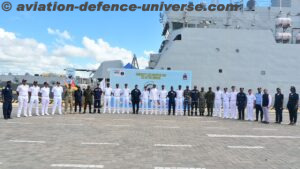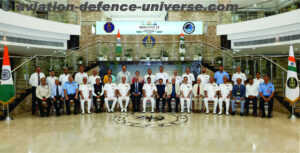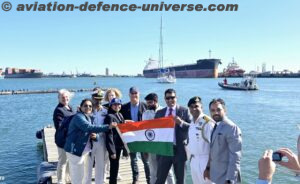New Delhi. 22 August 2018. An exclusive interaction session was organized by the Indian Navy with Professor Emeritus Commodore Arogyaswami Joseph Paulraj (Retd) from Stanford University at Kota House.
Hosted by Vice Admiral GS Pabby, AVSM, VSM, Chief of Materiel and all the technical Flag Officers stationed at New Delhi, some of the retired officers who have held important assignments in the Navy and DRDO, and those involved with scientific and Defence R&D also attended this interaction.
Professor Paulraj is a global icon in wireless technology and inventor of MIMO, which is the heart of the current high speed WiFi and 4G mobile systems. He is a recipient of the Padma Bhushan in 2010 besides top global honours – the IEEE Alexander Graham Bell Medal in 2011, the prestigious 2014 Marconi Society Prize and has been inducted into the US Patent Trademark Office National Inventors Hall of Fame in 2018.
On the discussions to enhance self-reliance of Indian defence in critical advanced technologies, Commodore Paulraj brought out the need to invest much more in R&D sectors, including design and fabrication, artificial intelligence, block chain and quantum computing. He spoke of requirement of enhanced application-based research in IITs and need for more Indian wireless startups to channelize some of the available good human resource currently working for the global MNCs. A joint meeting is planned with IIT Heads to identify areas for future work by the Indian Navy. Capt Shekhar Dutt, SM, IAS (Retd) former Defence Secretary and Governor of Chhattisgarh, also participated in the interaction and concurred with the sentiments expressed by Paulraj.
Prof AJ Paulraj is currently Chairman of Department of Telecom Steering Committee to deliberate and finalise Vision, Mission, Goals and Roadmaps for 5G India – 2020. His advice is being sought at the highest levels of the Government of India’s Ministries of Communication, Electronics and Information Technology and Defence Production. He regularly interacts with the Boards of top Indian academic institutions and telecommunication corporations.



































































































































